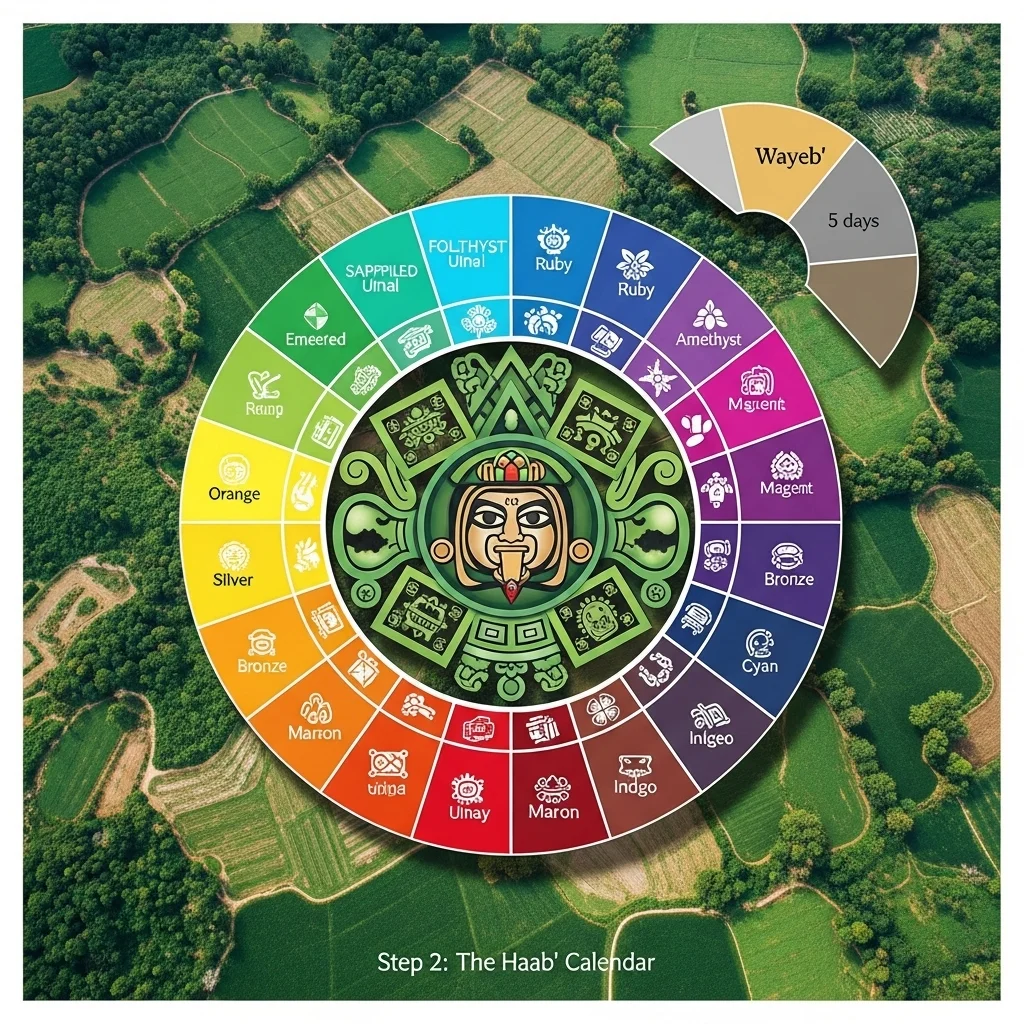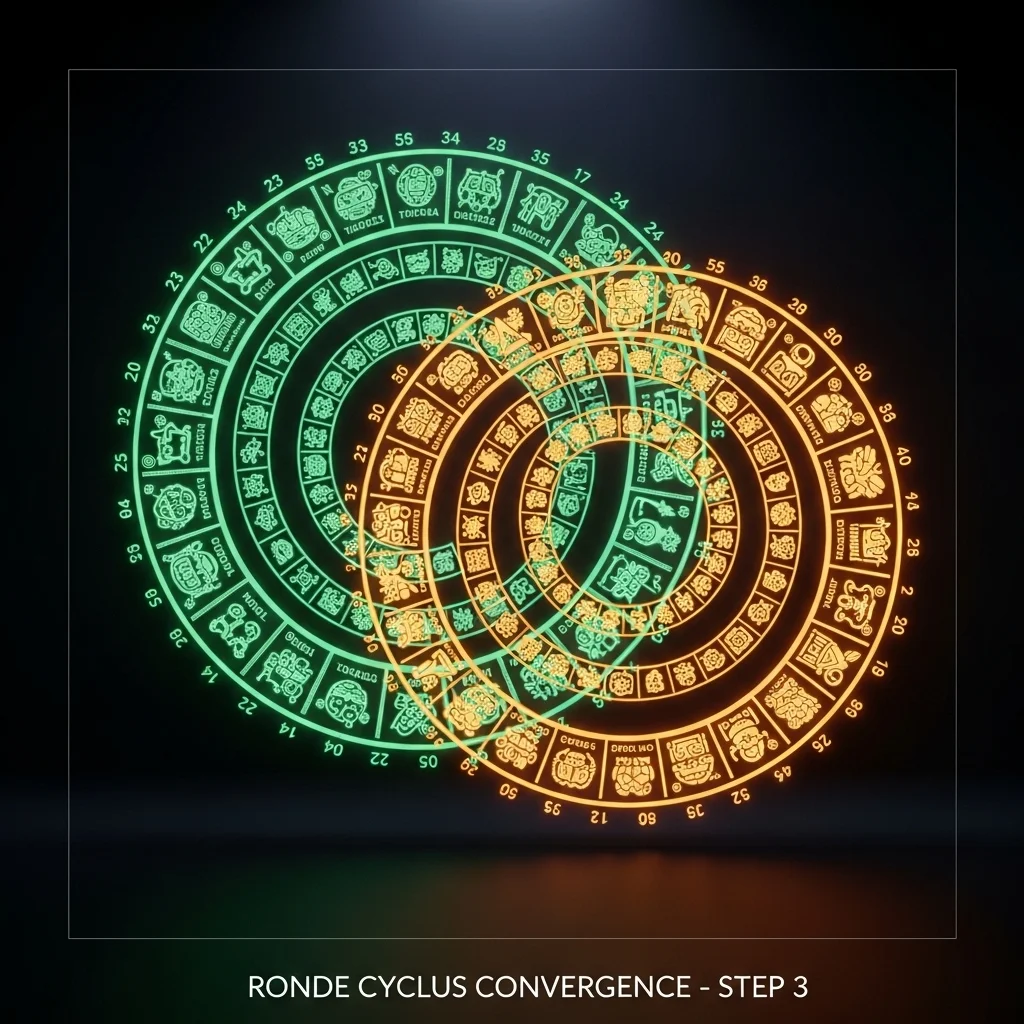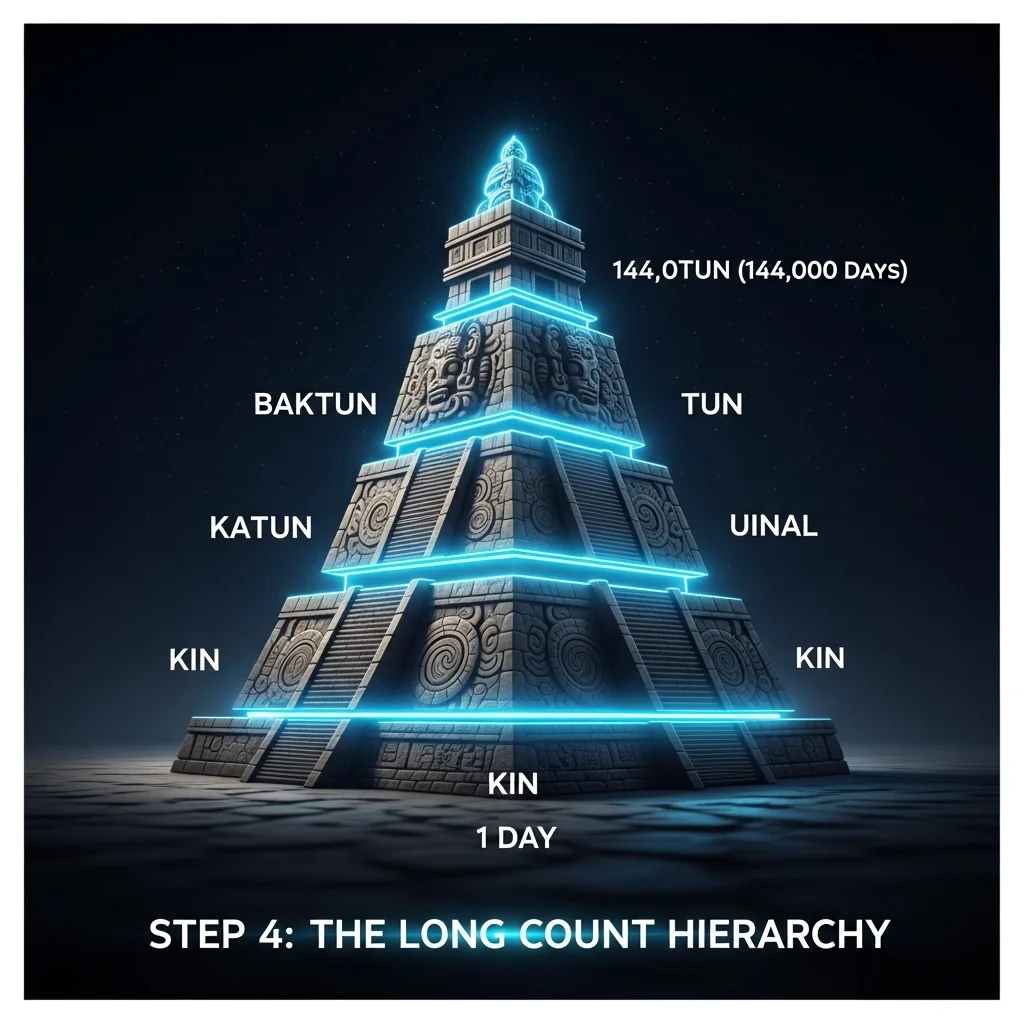What Makes Time Measurable?
The Maya calendar exposes patterns we now replicate with code
Automate
The cyclical structure – 13, 20, 52 – is perfect for algorithms that steer repetitive processes.
Integrate
By linking Tzolkin and Haab data you can create rich datasets that are both culturally and astronomically correct.
Visualise
The Maya’s spiral representation of time inspires modern data visualisations in apps and dashboards.
Validate
A cross-table of Long Count and Gregorian dates offers double checks – handy when migrating historical data.
A Steel Frame of Meaning.
A Steel Frame of Meaning

Although the Copán stone stelae are more than a thousand years old, you can pour their data logic into a spreadsheet surprisingly quickly.
At-a-Glance Overview
The Maya used three parallel calendars.
By stacking cycles they built extremely long timelines.
The same idea – small blocks, large patterns – underpins today’s microservice architectures.
Cyclical thinking avoids storing endless sequences
A fixed zero value (0.0.0.0.0 = 11 August 3114 BC) makes migration simple
Cultural context shapes the interface – then hieroglyphs, now icons
Step-by-Step Through Maya Time.
Step-by-Step Through Maya Time

Step 1: Tzolkin.
The sacred 260-day calendar. Each day pairs a number 1-13 with a name 1-20, creating a matrix of 260 unique days. Programming analogy: two nested for loops.

Step 2: Haab.
The agricultural 365-day calendar: 18 months of 20 days plus the extra 5-day Wayeb period. In software terms: an array with a bonus slice 😉.

Step 3: The Calendar Round.
After 52 Haab years, Tzolkin day 260 aligns again with Haab day 365. Think of it as a least common multiple – perfect for triggers in scheduling software.

Step 4: Long Count.
Five positions: baktun, katun, tun, uinal, kin. From millions of years past to far in the future. In databases we store this as five columns – prevents integer overflow.

Step 5: Convergence to ISO Date.
With astronomical correlation 584 283 you translate any Kin to an ISO-8601 day. In practice developers often cache a look-up table for performance.


Let’s Talk Time and Tech
The Maya calendar proves how ingenious data structures can be. Keen to explore how your platform could handle time, versions or cycles better? Let’s have a call; we’re curious about your story.
A Critical Look at the 2012 Myth

Why the World Was Never Going to End
The internet erupted in 2012: the Long Count would finish at 13.0.0.0.0 and – boom – game over. As I mentioned earlier, it was nothing more than the completion of one baktun.
Misinterpretations
Western linearity clashes with Maya cycles.
Hollywood needed a thrilling plot.
Scientific correlations were oversimplified in the media.
What Does the Archaeologist Say?
"Inscriptions refer to celebrations, not doom," says Professor Stuart. In fact, the Maya recorded dates millions of years before and after 2012.
Practical Tips: Calculate Your Maya Birthday

Not Astrology, but Cultural History
Tool or DIY?
First take the Gregorian date.
Convert it to the JDN (Julian Day Number).
Subtract 584 283.
The remainder modulo 260 = your Tzolkin day.
The remainder modulo 365 = your Haab day.
Error Sources
Skipping leap days
Choosing the wrong time zone
Mixing up correlation numbers
Looking Ahead: What Can Developers Learn?

Cyclical Data = Sustainable Data
In practice datasets often grow like crazy. Working with cycles helps keep relational tables lean.
Inspiring Patterns
Event Sourcing with periods instead of single timestamps
Cache invalidation based on round cycles
UI design with spiral timelines instead of linear sliders
What is the difference between Tzolkin and Haab? 😊
The key difference is purpose and length. The Tzolkin counts 260 days and is spiritually oriented, while the Haab follows a 365-day solar year for agriculture and civic administration. Running both systems side by side created a double calendar that connected religion and economy.
How does the Long Count align with our calendar? 🤔
Through the GMT correlation (584 283). Apply this number to the Julian Day Number and you can convert any Kin directly into an ISO date. It remains a mathematical model, but it is widely accepted in archaeology.
Was 21 December 2012 really the end of a cycle?
Yes, but only of the 13th baktun. Compare it to New Year’s Eve: a milestone, not an apocalypse. The next day simply began 13.0.0.0.1.
Can I schedule business processes with Maya cycles? 📅
Absolutely. Periodic audits, maintenance windows or marketing campaigns can be set to 260- or 52-day cycles. It forces teams to keep rhythm and prevents deadline slippage.
How reliable are online Maya horoscopes?
They are fun, but rarely based on original sources. Historically the calendar was not for personal profiles but for ritual timing. Take them with a pinch of salt.
What can data engineers learn from Maya notation? 🛠️
Mainly modularity: five fields with fixed bases (20 or 18) make scaling elegant. That principle is equally useful in modern database schema design.
Why does Spartner use this as a source of inspiration?
Because it is a textbook example of information architecture that still works centuries later. Viewing time this way helps us design more flexible software.
Do I need to know different correlation numbers?
There are alternatives (Spinden, Böhm). For most purposes GMT is sufficient. However, if you work with specific excavations always check which number the archaeologists there use.
Is there a leap day in the Maya system?
No. The Haab counts 365 days without a leap day. This causes a slow drift against the tropical year, but because the Tzolkin runs in parallel the overall system remains culturally functional.
Is the Maya calendar still in use? 🌱
Yes. In parts of Guatemala, K’iche’ daykeepers still track the Tzolkin daily. The system lives on – albeit alongside the modern calendar.










.webp)
